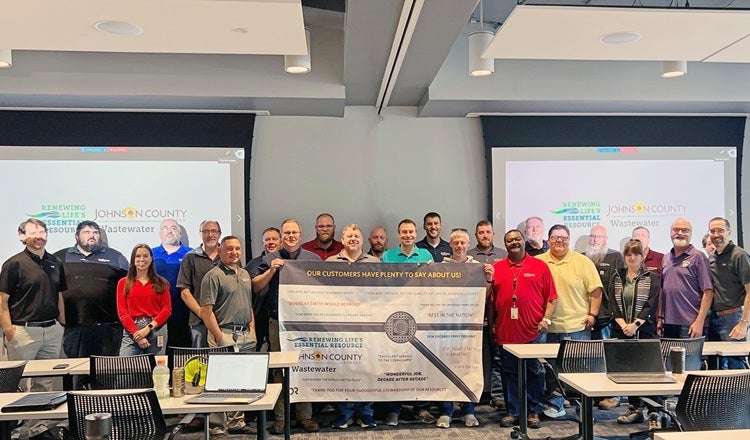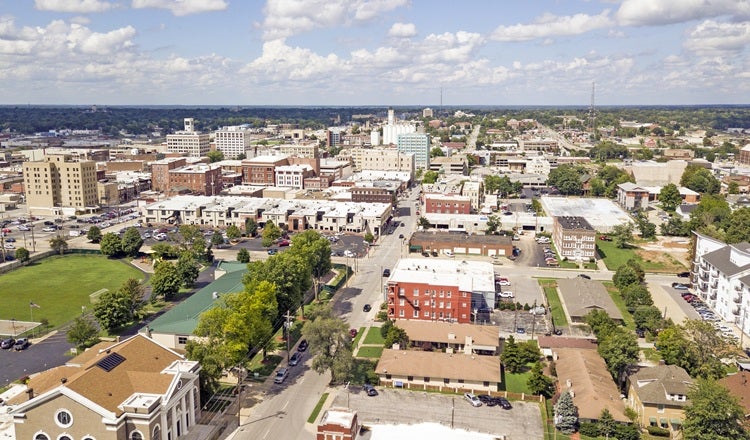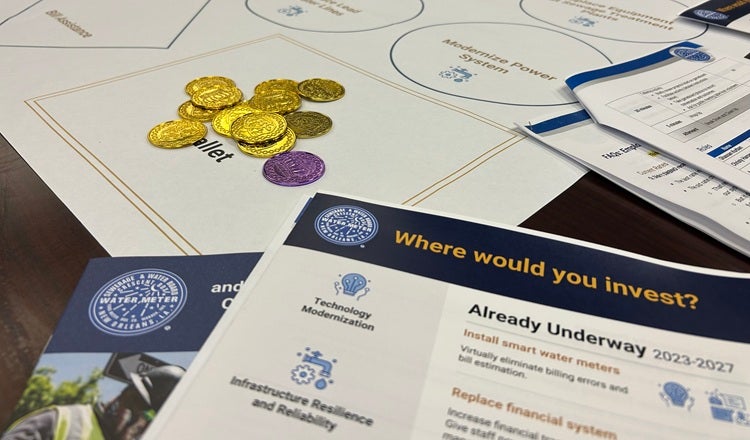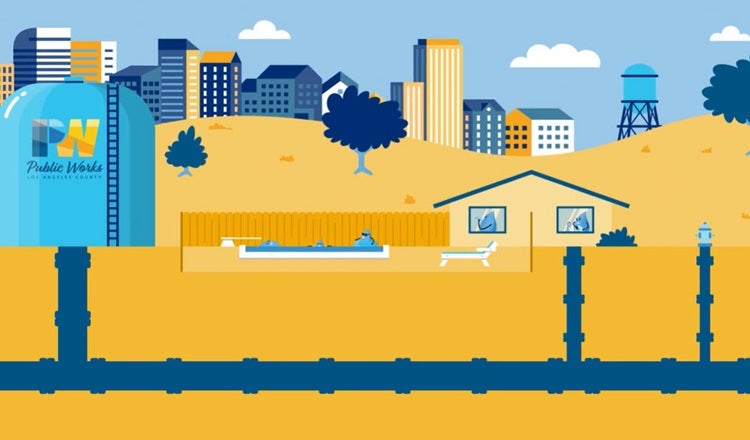
Talking Dollars and Sense: How to Make the Case for Water Investments
Beyond the Bottom Line
Water infrastructure is often invisible until it fails. Yet the infrastructure and systems that deliver clean drinking water, treat wastewater and manage water resources are foundational to public health, economic development and environmental sustainability. As water professionals, we know this. But how do we help others see it, too?
We’ve been exploring that question through our Value of Water approach. To make the case for water infrastructure investments, we need more than facts. Securing support means bringing stakeholders together, planning with purpose, and clearly demonstrating the long-term value these investments deliver.
In this article, we share practical strategies and real-world examples to help you justify funding, maximize value, and align with your community’s economic, societal and environmental goals.
Be the First to Know
Subscribe to receive our Water Insights
Build Relationships Before You Need Them
Trust isn’t built overnight. One of the most common mistakes agencies make is waiting until they need a rate increase to start communicating. By then, it’s often too late.
Instead, we recommend ongoing engagement. Share updates, celebrate successes and be transparent about challenges.
Transparency is key. When water stewards openly share their challenges, like deferred maintenance or rising costs, they build empathy and understanding. People are more willing to support investments when they know what’s at stake.

In Johnson County, Kansas, we helped the wastewater utility conduct community surveys to prioritize projects based on public values. They used the results to shape their capital prioritization and integrated planning process. They also pulled resident quotes onto banners, which now hang in treatment plants and operations centers. These tangible reminders not only validate the utility’s work but also instill pride in the workforce.
Monetize Benefits and Calculate Returns With the Right Tools
When justifying investments in water infrastructure, we often rely on direct metrics like return on investment and cost savings. These are essential, especially when speaking to boards and elected officials. But they’re not the whole story.
Other metrics such as environmental restoration, recreational opportunities and quality of life improvements can be just as persuasive. To capture the full value of water investments, we use specialized tools like multicriteria decision analysis (MCDA), Sustainable Return on Investment (SROI) and economic impact assessment (EIA).
- MCDA embeds non-financial factors into capital planning, helping leaders evaluate alternatives and communicate tradeoffs clearly.
- SROI extends traditional benefit-cost analysis to include long-term impacts and externalities like ecosystem services and public health improvements.
- EIA assesses macroeconomic effects, such as job growth and increased demand for local goods and services.
These approaches help water stewards move beyond a least-cost mindset toward value-based decisions that reflect community priorities.

For example, in Springfield, Missouri, the city used SROI to evaluate nearly 20 alternatives. The SROI process evaluated the entire scope of potential costs and benefits while simultaneously incorporating a risk analysis component. The SROI not only captures the full life-cycle costs of investments but also captures external triple bottom line impacts, such as improved water quality, habitat enhancements and recreational benefits. The Springfield results helped prioritize stream restoration and trash capture in stormwater systems, enabling compliance with federal regulations and enhancing community well-being. With data to back up the benefits, the utility made a compelling case for the far-reaching investment and moved forward with confidence.
The three tools mentioned above are not the only tools available in our Value of Water approach. In fact, justifying a water infrastructure investment often requires a tailored mix of tools to support informed decisions.
By leveraging the right combination of tools, water stewards can demonstrate the full value of infrastructure investments, capturing fiscal, environmental, and social returns to build stakeholder support and move projects forward with confidence.
Communicate in Terms People Understand
One of the biggest communication challenges is translating technical details into relatable messages. People don’t always understand capital improvement plans, rate structures or infrastructure lifecycles. But they do understand quality of life, reliability and fairness.

In New Orleans, we helped the Sewerage and Water Board gamify the development of its ten-year CIP to invite informed conversation about an unpopular rate increase proposal. Employees and board members used Mardi Gras doubloons to allocate funding to different priorities, each with a dollar-sign rating. This hands-on exercise helped participants see where the money from a rate increase would go, what investments accomplished for them and how the rate decision would affect system reliability.
The result? Greater understanding, buy-in and even employee volunteers who wanted to facilitate public workshops. By starting internally and building momentum, the Sewerage and Water Board laid the groundwork for broader engagement.
Tailor Messages to Each Audience
Different stakeholders care about different things. City councils may focus on bond ratings and fiscal responsibility. Boards may prioritize organizational sustainability. The general public may care most about service reliability and environmental impact.
That’s why it’s important to tailor messages. Use the data points that matter to each group. For elected officials, highlight how investments align with strategic plans and community goals. For customers, show how dollars translate into tangible benefits, like fewer main breaks, cleaner streams or continued growth.
Affordability and acceptability are two sides of the same coin. While affordability is a very real challenge, particularly for low-income customers, rate increases are often thwarted because of acceptability of the proposed increases. People may be able to afford a rate increase, but they won’t accept it unless they see the value. As one analogy goes, no one wants to pay $6 for gas station coffee. But they might pay that, or more, for a handcrafted latte created by barista they trust. The audience must understand what they’re getting before they can assign a value to it.
Align With Community Values
Every community is different. In Wisconsin, sustainability was a top priority. In North Carolina, we’ve seen growth and development as key drivers. And in Tucson, Arizona, water scarcity shaped public attitudes and made rate increases less important.
Understanding local context is essential. We often create equity atlases or community profiles to map infrastructure, demographics and public health data. These tools help water stewards identify where investments can make the greatest impact and tell compelling stories about why they matter.

For example, in Los Angeles County, we supported water and wastewater rate increases by tying investments to community benefits. The utility made its data public, demonstrating transparency and accountability. That kind of openness builds trust and supports long-term planning.
Communicate the Value of Water With Confidence
Our Value of Water framework is more than a philosophy — it’s a practical approach to making smarter, more impactful decisions. By combining engineering, economics, behavioral science and strategic communications, we can help water stewards move from reactive to proactive, from least-cost to high-value, and from skepticism to support.
Water infrastructure may be invisible, but its value is undeniable. With the right data, tools and messaging, we can help your stakeholders see that. If you’d like to explore how our Value of Water approach could support your efforts, please email us at water [at] hdrinc.com (water[at]hdrinc[dot]com).


